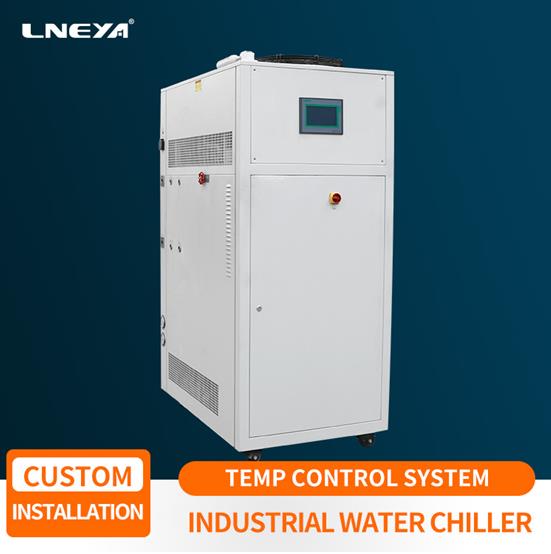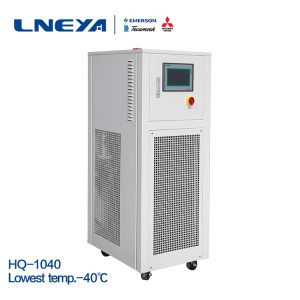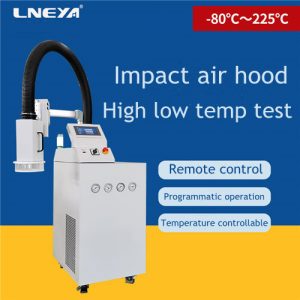Description of the principle and mode of industrial water chiller refrigeration cycle
Anyone who knows about industrial water
chillers should know that it uses compressors to achieve the cooling effect.
So, how does it work when refrigerating?

1. Vapor compression refrigeration cycle.
After cooling and pressurizing the vapor
from the evaporator, it is recondensed into a liquid, and then evaporated
again, so that it continues to circulate, which is the vapor compression
refrigeration cycle. Industrial water chillers adopt this refrigeration method,
and the principle of vapor compression refrigeration cycle is realized in this
way.
Fill the industrial water chiller with the
refrigeration medium in a sealed system. After the liquid working fluid is
throttled and depressurized by the throttling device, it will vaporize and
absorb heat at the middle pressure in the evaporator to become low-temperature
and low-pressure steam, and then pass through the compressor. Adiabatic
compression into high temperature and high pressure steam, liquefaction in the
condenser to release heat, and then enter the throttling device, thus
completing a refrigeration cycle.
2. Absorption refrigeration cycle.
The absorption refrigeration cycle utilizes
the heat energy provided by the heat source to make the working medium
circulate. Its working principle is as follows: it replaces the compressor with
components such as absorber and generator, and uses two working mediums. The
working medium with low boiling point is called refrigerant The high boiling
point working fluid is called absorbent, and the functions and principles of
other components are basically the same as the vapor compression refrigeration
cycle.
There are two loops in the absorption
refrigeration cycle of industrial water chillers. Its working process is: after
the liquid refrigerant is throttled and reduced by the throttling device, it
evaporates and absorbs heat at the middle pressure in the evaporator and
becomes low-pressure, low-temperature refrigerant vapor. After entering the
absorber, it is strongly absorbed by the absorbent to form a high-concentration
refrigerant solution and release heat of dissolution. Then the refrigerant
solution in the equipment is pumped into the generator, heated by the heat
source to produce high-pressure refrigerant vapor, which is sent to the
condenser to be condensed into liquid refrigerant, and the remaining dilute
solution in the generator is decompressed Back to the absorber.
Summarize
Wuxi Guanya (LNEYA) adopts environmentally
friendly refrigerants for the refrigeration operation of industrial water
chillers, in an environmentally friendly environment, in line with the
development theme of the current environment. Global consulting sales@lneya.com
Recomendaciones relacionadas
-
Why do machine tool spindles require chillers?
871The main reasons why machine tool spindles require a chiller are as follows: Temperature Control: During the machining process, the spindle generates a large amount of heat due to high-speed rotation. If not controlled, this heat ...
Ver detalles -
Parameters of small gas condensing liquefaction system
1177During the process of loading and unloading gasoline and refueling vehicles, and collecting high-concentration gas from the chemical plant. One or two methods in the process of adsorption or condensation, or the conversion of oil and gas from a ga...
Ver detalles -
Powertrain test cooling system-chiller maintenance
1139The powertrain test cooling system-chiller is one of the cooling systems. It has the characteristics of higher application efficiency and lower total energy consumption, and has generally been favored by many companies. However, no matter what kin...
Ver detalles -
¿Cómo elegir el modelo del dispositivo de control de temperatura de la máquina de litografía?
889¿Cómo elegir un refrigerador industrial adecuado y a qué aspectos hay que prestar atención en el diseño de la unidad?1. Elija un dispositivo de control de temperatura refrigerado por aire o por agua para la máquina litográficaLos métodos de condensación de los...
Ver detalles
 LNEYA Enfriadoras industriales Fabricante Proveedor
LNEYA Enfriadoras industriales Fabricante Proveedor













